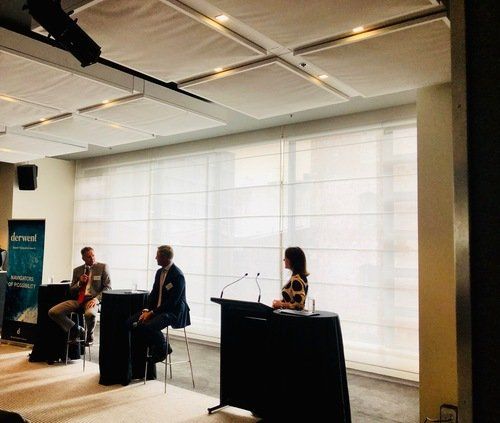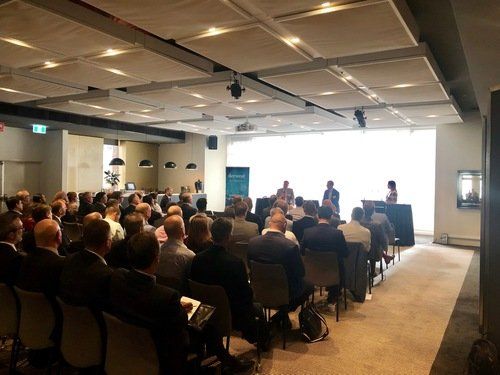News
Dispelling The Myths Of Private Equity

An impressive room of senior executives turned out this morning for Derwent’s
Dispelling the Myths of Private Equity panel discussion. Over the past 21 years Derwent has built an extensive track record of successful appointments for Private Equity Investee companies across all sectors from industrials, health, retail & consumer to energy and renewables and this morning we were joined by Mal McHutchison and David Haslett for an open and robust discussion on the challenges and benefits of leading PE backed assets.
Our panel discussed the important differences between the traditional corporate setting and that of private equity, emphasising the focus on cashflow and the shorter window to create value, which in turn led to a discussion about the pace at which private equity move and the benefits of working with decisive and agile owners who look to accelerate the businesses plan’s and drive corporate development.
As with all businesses, it is important for senior executives to nurture meaningful and relevant relationships inside and outside of the boardroom. Both Mal & David provided great tips to navigating the often-challenging path where JV partners or owner/founders remain in the business and around the Boardroom table; advising the audience to align and maintain focus on the creation of sustainable long-term value and opportunity.
The panel put to bed some of the die-hard myths that PE strips value and runs lean or that it is difficult to attract and retain top talent. Both our speakers stressed the overarching focus of private equity is to create enterprise value and that when it came to attracting talent, PE isn’t necessarily less certain than other markets; ownership changes happen in all markets and whilst there is risk involved, participation in equity can prove very attractive. They highlighted the benefits of working with highly intelligent people who have access to both expertise and capital but punctuated this saying it is not for everyone and executives need to be comfortable with a step up in pace.
We wrapped up our session with some advice on how executives and industry leaders can get involved with PE assets and firms, suggesting our audience:
- Utilise their knowledge as experts in given fields.
- PE like to know experts who can add value either as consultants or business partners.
- Some PE companies have preferred search partners. Build a relationship with these firms.


Share this article
Recent Articles



Sydney
Level 21
123 Pitt Street
Sydney NSW 2000
Australia
sydney@derwentsearch.com.au
Melbourne
Level 28
360 Collins Street
Melbourne VIC 3000
Australia
melbourne@derwentsearch.com.au
Perth
Level 29
1 Spring Street
Perth WA 6000
Australia
perth@derwentsearch.com.au
Brisbane
Level 19
10 Eagle Street Brisbane
Brisbane QLD 4000
Australia
brisbane@derwentsearch.com.au
Sydney
Level 21
123 Pitt Street
Sydney NSW 2000
Australia
+61 2 9223 1855
sydney@derwentsearch.com.au
sydney@derwentsearch.com.au
Melbourne
Level 11
350 Collins Street
Melbourne VIC 3000
Australia
+61 3 9691 1333
melbourne@derwentsearch.com.au
melbourne@derwentsearch.com.au
Perth
Level 15
240 St Georges Terrace
Perth WA 6000
Australia
+61 8 9282 5250
perth@derwentsearch.com.au
perth@derwentsearch.com.au
Canberra
The Realm
18 National Circuit
Barton ACT 2600
Australia
canberra@derwentsearch.com.au
Brisbane
Level 19
10 Eagle Street Brisbane
Brisbane QLD 4000
Australia
+61 2 9223 1855
brisbane@derwentsearch.com.au
canberra@derwentsearch.com.au
Canberra
The Realm
18 National Circuit
Barton ACT 2600
Australia
+61 2 9223 1855
canberra@derwentsearch.com.au
Derwent


